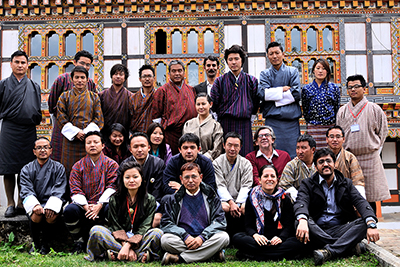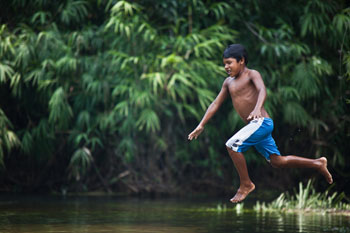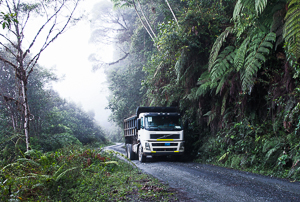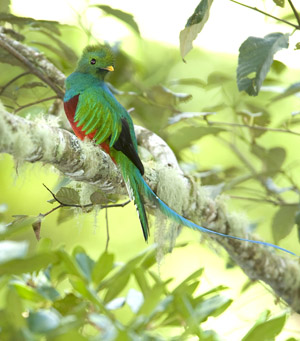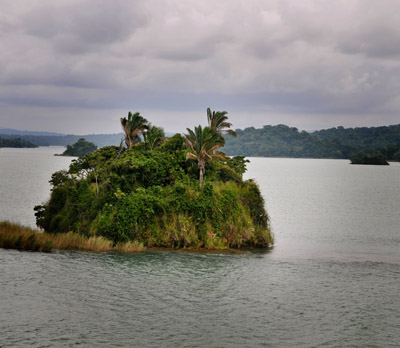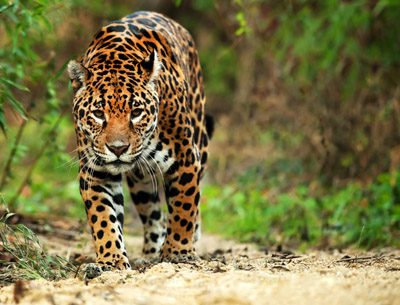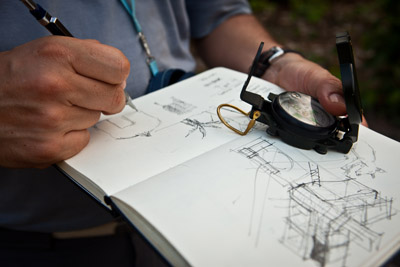News
CSF recently completed our second course in the Himalayan region, Analysis of Infrastructure from a Conservation Economics Perspective Course. The course, held at the Ugyen Wangchuck Institute for Conservation and Environment (UWICE), was CSF's first to focus primarily on infrastructure development in the region from a conservation economics perspective. UWICE's beautiful campus located in the culture and biodiversity-rich Bumthang served as a great location for the 22 Himalayan-based participants to learn about economic tools for conservation and infrastructure planning.
That roads cause deforestation has been known for decades, documented in scholarly and anecdotal accounts. But this outstanding video from roadfree.org may be the most effective telling of this roads-and-forests story yet! Watch it. If you care about nature and have a sense of humor you'll want to laugh and cry at the same time.Roadlessness was at the center of policy battles over US public lands in the 1990s. Now it's gaining some traction in the tropics, where the advance of roads has fragmented nature into smaller and smaller bits, condemning certain species, especially large predators, as well as indigenous cultures that depend on not having contact with the modern world.
On November 12th, in Brasília, Brazil, 30 journalists from the Amazonian regional media as well as from the national and international outlets attended an infrastructure-focused workshop organized by CSF-Brasil. These professionals hailed from various organizations including O Eco, IPAM, IMAZON, WWF, and TNC. John Lyons of the Wall Street Journal, Wilson Cabral of Instituto Tecnológico de Aeronáutica, and Paul E. Little, anthropologist and infrastructure expert, were also in attendance. Speakers shared information about the impacts of infrastructure projects on ecosystem services in the Amazon. The event provided a forum to discuss infrastructure project planning as well as key environmental, social, economic and legal issues that need to be understood by society.
On a clear day from the top of western Panama’s 11,400-foot Volcán Barú, you can see the Pacific Ocean to the south and the azure Caribbean to the north. A little harder to spot is the best route around the dormant volcano, the centerpiece of the 35,000-acre Volcán Barú National Park. In 2003, CSF and The Nature Conservancy (TNC) performed an analysis to find out.
One of CSF’s central ideas is that we can change the world by grabbing levers connecting to very big things, and pulling at the right time. The Panama Canal qualifies as a very big thing. The hundred-year-old waterway has been the most transformative piece of infrastructure in the Western Hemisphere and, in 2000, was set to transform Panama all over again. That’s when CSF helped a small, local organization pull on one of those levers for change.
Since 1998, Conservation Strategy Fund has been committed to making conservation efforts smarter through the use of economics. To celebrate, we're going to be sharing 15 stories over the course of the next few weeks. Each of these stories reflects how CSF's unique training and research programs equip people with the ability to both calculate and articulate the benefits of doing development right. Read our first story below and follow the series through our blog or on Facebook, and share your story at [email protected].
CSF is opening a program of “office hours” with experts who will help you figure out what to analyze and how. These consultations are free and an exclusive service for graduates of CSF courses..
Here’s how it works: Click on the link below and provide some basic information about the issue, problem, policy or activity you want to analyze. We’ll gather the ideas and set up a meeting for you with a member of our staff or one of our consulting experts via videoconference or telephone.
Examples of analyses we will help you design could include
• cost-benefit analysis of a sustainable development project,
• revenue strategy for a protected area,
• formulation of arguments to confront a specific environmental threat,
• economic valuation of an ecosystem or protected area,
That doesn't really seem like news. We've known for a long time, intuitively and then empirically, that deforestation happens in places with easier access. Roads in the Amazon and other remote regions have been the most important vectors of deforestation. Farming in places where you can get supplies in and produce out cheaply is economically attractive.

